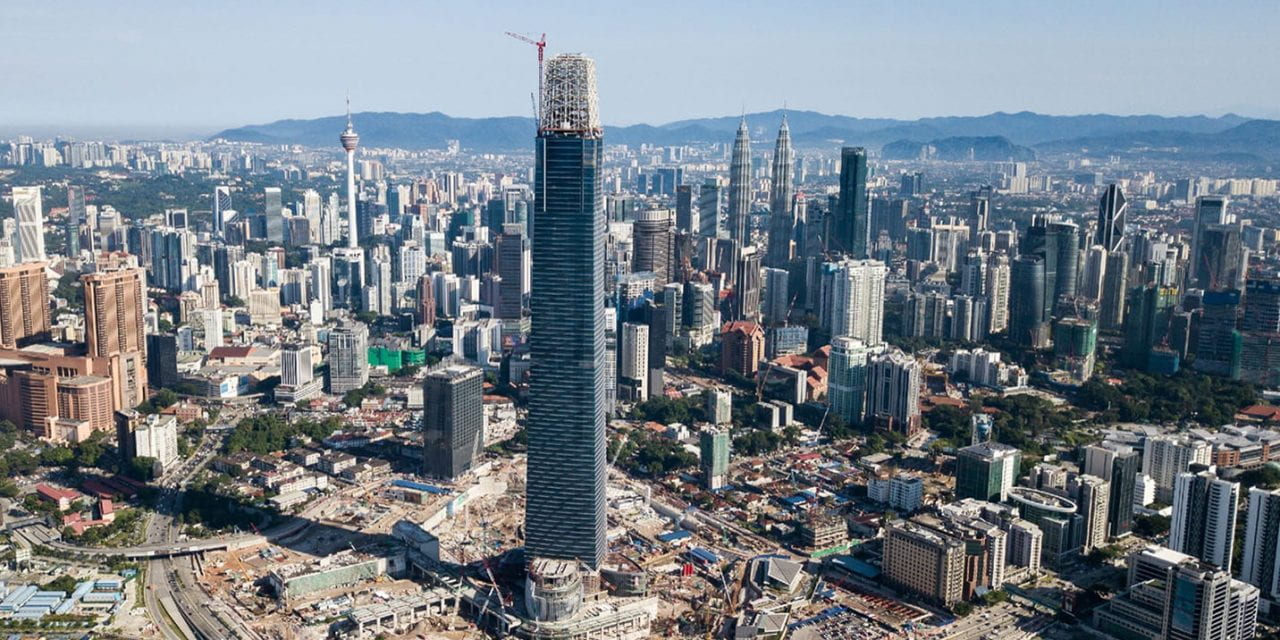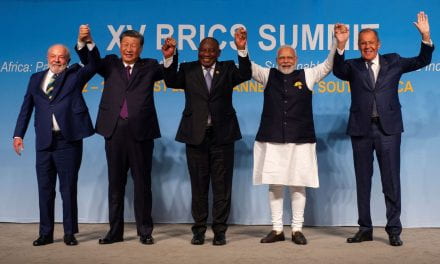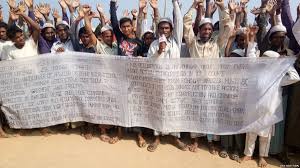On October 6th, 2020, German Ambassador Christoph Heusgen presented a joint statement on behalf of 39 member nations to the United Nations Human Rights Committee that condemned China’s recent human rights abuses, specifically, its treatment of Hong Kong, and the persecution of the ethnic Uighur population of the Xinjiang Autonomous Region. At roughly the same time one year before, only 22 nations were party to a similar statement, one which focused solely on the treatment of ethnic Uighurs. In response to the initial challenge, Belarus ambassador Valentin Rybakov issued a joint statement, given on behalf of 54 member nations, which voiced support for China, praising its efforts in counter-terrorism and de-escalation. Rybakov’s statement went so far as to “commend China’s remarkable achievements in the field of human rights.” China’s Ambassador to the United Nations responded that the “accusations against Beijing [were] baseless” and a “gross interference in China’s internal affairs and deliberate provocation.”
Regardless of whether China’s actions qualify as human rights abuses, the present scenario begs three questions which I intend to address in this manuscript. First, how has China used its geopolitical power to influence other states and build a coalition that rivals that of the Western world? Second, how is the international challenge to China’s human rights record politically motivated? Finally, and of particular importance, does China pose a significant threat to the United States’ hegemony and the liberal international order?
I propose that, through economic policies such as the Belt and Road Initiative (BRI) and the Regional Comprehensive Economic Partnership (RCEP), China has exerted its influence upon various states, garnering itself a measure of regional hegemony. Furthermore, recognizing the relationship between economic initiatives and geopolitical power, it is clear that there is a tangible benefit for nations challenging China’s record on human rights, aside from ensuring human rights are upheld. These benefits are two-fold. First, Western powers, which are largely democratic, tend to have an innate mistrust of autocratic government, and a challenge to Beijing inherently challenges autocratic rule. Second, as China’s growth poses a threat to the United States’ global hegemony, stalling that growth is beneficial not only to the United States, but also to any nation that finds itself benefitting from the current liberal international order. However, this mistrust is not necessarily warranted.
This manuscript analyzes the relationship between economic influence and geopolitical power, showing that China’s economic initiatives have created a regional power dynamic involving a multitude of states, one which may eventually challenge the ideological dominance enjoyed by the United States. I also discuss the impact of regime types. This discussion will include the characteristic benefits or drawbacks of democracy or autocracy, namely how this dimension has affected economic policy decisions through exposure or insulation to domestic constraints.
I posit that China does pose a serious threat to U.S. hegemony, however, this power transition, and the subsequent effects, can be addressed and mitigated if steps are taken to challenge the nation’s continued geopolitical growth.
What is Geopolitical Power?
To discuss the relationship between economic and military influence and geopolitical power, it is important to first understand what geopolitical power is, as well as the variety of ways it may present itself. Using Colin Flint’s typology, geopolitical power can be divided into 3 dimensions: Material, Relational, and Ideological.
Material power is based on a country’s material capability, or their capacity to wage war. Flint states that “In the late twentieth century, as the geopolitical study of power became increasingly academic, scholars created numerous indices of power, which remained focused on country-specific capabilities of industrial-strength, size and educational level of the population, as well as military might.” In this sense, power is defined by scholars as a tangible commodity which can be measured. An example of such is a nation’s possession of nuclear warheads. Put simply, through this lens, power is defined as possessing the material strength, most commonly military, to force other actors to do what they want.
Relational power is the next step in the evolution of how scholars recognize geopolitical power. Though the material capability to influence and coerce other actors is important, it is meaningless without the power relation between two or more actors. In essence, a strong power can only be categorized as such concerning another actor which is considered to be relatively weak within the specified political framework. As an example of such, Flint writes “the power relations of nuclear proliferation lie not solely in the technical capacity to build a bomb but in the power relations inherent within some states being members of the United Nations Security Council and others, such as Iran and North Korea, being labeled rogue or outlaw states.” This theory is recognized in application to economic influence by Joseph Nye, who writes “Judging whether economic interdependence produces power requires looking at the balance of asymmetries.”
Ideological power is the final evolution Flint recognizes in his typology of geopolitical power. It is a further progression of the aforementioned relational categorization. Ideological power is defined as “the ability or need not to force others to do what you want, but to make them follow your agenda willingly without considering alternatives.” Through this characterization, normative structure and perceived mutual benefit influence actors to cooperate. This segmentation of geopolitical power is especially relevant to the case of China. Policies for economic growth and development are created by rich and powerful countries and adopted by the world’s poorest countries in the name of progress and growth.
The discussion, or labeling of different categorizations as evolutions, is not intended to imply that discussing geopolitical power in terms of material or relational power is no longer worthwhile or valid. It is also not meant to insinuate that these theories are mutually exclusive. While a new means by which we examine power, ideological, has become prevalent, the use of material or relational power is still very much at play in our global order. These means of coercion may no longer be the dominant philosophy when analyzing geopolitical power, but they remain impactful all the same.
The Relationship Between Economic Influence and Geopolitical Power
Two economic initiatives stand at the forefront of China’s foreign economic policy: The Belt and Road Initiative (BRI) and the Regional Comprehensive Economic Partnership (RCEP).
Through China’s Belt and Road Initiative, various nations have become indebted to China, becoming subject to their whim internationally to address trade deficit domestically. China has been extremely successful in implementing economic influence in the form of foreign direct investment through the Belt and Road Initiative. China has exerted a great deal of control over nations through the BRI without exerting any military influence. As Nye puts it, “A carrot is more effective than a stick if you wish to lead a mule to water.”
The Belt and Road Initiative was launched by the People’s Republic of China’s President Xi Jinping in 2013. It takes a two-pronged approach: The Overland Silk Road Economic Belt and the Maritime Silk Road Economic Belt. These initiatives aim to expand the use of Chinese currency, and, in the words of Xi Jinping, “break the bottleneck of Asian connectivity.” Specifically, these two prongs rely on long-term development lending to build infrastructure in foreign countries. The initiative is comprehensive and ties a tremendous number of countries to China through economic dependence. As of January 30th, 2021, China has signed 205 cooperative agreements for building the Belt and Road. These agreements involve 140 different countries, as well as 31 international organizations. This affords China geopolitical power in two ways. First, there is the issue of debt itself. Many of the countries China has involved in the Belt and Road Initiative are indebted to it, which exerts influence in itself. This lends China a deal of geopolitical power, however, the more formidable effects of this partnership are still yet to be seen. Much like the RCEP, which will be discussed next, the Belt and Road Initiative will eventually create economic interdependence, once infrastructure development is complete, and, subsequently, a power relation between the involved countries. In this power relation, China is the relatively powerful state, and those it has invested in are relatively weaker. As the Belt and Road Initiative continues, and the project moves from a developmental to an actionable stage, this power dynamic will only be further ingrained in the liberal economic order. While this economic initiative is the largest in terms of involved actors, it isn’t necessarily the most worrying in regards to the end of the West’s global supremacy.
The Regional Comprehensive Trade Partnership (RCEP), is China’s latest attempt at challenging Western dominance of the global market. This trade agreement is the largest free trade agreement in history, and it doesn’t include the United States, the largest economy in the world. The partnership, which was signed on November 15th, 2020, includes 15 nations and accounts for roughly 30% of global trade. As the largest or second-largest exporter of goods to most nations within the region, enhanced access to foreign markets provides China’s economy with significant new opportunities. While this trade agreement is beneficial on its own, it also works in tandem with the Belt and Road Initiative, “Improv[ing] access to Chinese…funds, enhancing gains from market access by strengthening transport, energy, and communications links.” Additionally, the RCEP explicitly satisfies the stated goal of PRC President Xi Jinping to break the bottleneck is Asian connectivity. Stronger economic interdependence boosts China’s role as a regional hegemon. China is, by far, the largest economy party to the RCEP, and as such, will be able to exert the economic clout necessary to drive policy decisions favorable to its success and growth.
In summary, China is not exerting its will over these foreign entities through the threat of military action or dominance. Keeping in mind that ideological power is an evolution of relational power, the dichotomy between the economic standing of China and those who are receiving foreign direct investment fits well within the relational and ideological framework of geopolitics. China is the strong or powerful actor in this power relation, while investment targets are the relatively weaker states. Past this, however, is the normative structure enforced and upheld by the One Belt, One Road initiative and the RCEP. While these economic policies are currently a means of engaging in relational power dynamics, the creation and enforcement of this new normative structure may lend itself to China’s ideological challenge to the United States.
The Role of Autocracy
The power contention between the United States and China, or more generally the East and the West, can be attributed to a variety of differences. However, the cornerstone of this great power rivalry is a difference in regime type: Democracy vs. Autocracy. As we have seen, it is evident that China is expanding rapidly. In truth, China’s economic explosion dominates contemporary discussion on international affairs. More specifically, the discussion revolves around the threat that China poses to U.S. global leadership and the international order that surrounds it. China has not been reserved about its intent for the future. This is evident by China’s China 2049 initiative, which was drafted into the People’s Republic of China’s constitution in 2012. This initiative aims to make China a globally, and domestically, recognized superpower by 2049. This is by no means inconceivable. Conventional wisdom holds that we are on track to enter a post-American world. Furthermore, according to the 2020 Democracy Report, there is an “acceleration and deepening of autocratization around the world.”, signaling an ideological shift away from the contemporary liberal order.
It is easy to see why autocracy is appealing to developing nations when considering the case of China. Under the autocratic structure, China is seemingly on a track to surpass the United States as a global superpower. Their leadership seems more efficient, cohesive, and better equipped to respond to crises quickly. Despite this, Matthew Kroenig argues that the United States will triumph in this struggle due to the democratic advantage it holds.
Kroenig’s theory of democratic advantage aggregates previous findings which show how a democratic regime leads to beneficial economic and war outcomes. World War Two provides a stark example of the democratic advantage in motion. World War Two may, for my purposes, be boiled down to a struggle between democracy and autocracy. The United States, the United Kingdom, and France represent democracy and Nazi Germany, Fascist Italy, and imperial Japan represent autocracy. By the end of this conflict, the predominant autocratic powers of the 20th century were soundly defeated. Furthermore, shortly after the end of the conflict, the aforementioned autocratic nations were reborn as democracies, prospering in the years since.
Moving into the democratic advantage, or rather the autocratic disadvantage, today, Kroenig’s arguments center on China. First, is China’s history of economic growth. While the PRC was established by Mao Zedong in 1949, it was not until 1978 that China achieved economic success. This success followed a series of economic reforms, modeled after the Western concept of a free market, enacted by Deng Xiaoping. While this model, unable to be described categorically as ‘communist’ or ‘capitalist’ has been extremely successful for short-term economic growth, it remains limited by CCP influence, especially in the long-term. Kroenig writes that “Theory and history suggest, however, that state-planned economies cannot generate high rates of return over the long term.” Capitalist reform in China’s economic sector has slowed since Xi Jinping took power, with economic institutions now acting as support for the machinations of the Chinese Communist Party. This may stifle innovation, fail to incentivize growth, and, now that unproductive labor has been fully exploited, signal an era of stalled development.
In terms of long-term stability, the theory of democratic advantage is best expressed in the words of Niccolò Machiavelli: “I, therefore, disagree with the common opinion that a populace in power is unstable [and] changeable … The prince … unchecked by laws, will be more … unstable, and imprudent than a populace.” On the surface, this wisdom may not seem to be particularly applicable in the case of China. Arguments could be made that President Xi Jinping’s success in his call to action against Uighurs, in which he called for “an all-out ‘struggle against terrorism, infiltration and separatism’ using the ‘organs of dictatorship,’ and showing ‘absolutely no mercy.” is evidence of an autocratic advantage. However, while this struggle against terrorism is being carried out more efficiently than it could be through a democratic structure, and likely with greater success, the imprudent nature remains. Thus far, the consequences of China’s rash actions have not severely impacted their contemporary affairs. However, as evidenced by the aforementioned discussion of foreign challenges to Beijing’s record on human rights, as well as the power-contention’s dominance of contemporary foreign affairs dialogue, they may very soon be forced to face the consequences of their actions.
Despite the marked differences between historical and contemporary international affairs, “It is [undeniably] notable how often democracies appear at or near the top of global power rankings. And this is even more remarkable when one considers how historically rare this form of government has been.” Through the aforementioned facts presented in this manuscript, it is evident that China is making great strides to increase its geopolitical standing on the world stage. While much of this can be attributed to explicit efforts by the People’s Republic of China to modernize and expand their sphere of influence, some of their advancement can only be accredited to the action, or rather inaction, of the United States in contemporary global affairs.
Take, for example, China’s Belt and Road Initiative. China’s foreign economic policy does not exist in a vacuum. Through the United States’ pulling back in recent years, China, and Xi Jinping in particular, has been able to step forward and proclaim that China is the champion of free trade. China’s Foreign Direct Investment (FDI) is formidable, however, it isn’t infeasible that a resurgence in the United States’s FDI can match it. Furthermore, competing investment in developing nations would actually be mutually beneficial. Developing nations would experience further economic growth as a result of greater investment, and economic integration between the United States and these nations would severely limit China’s sphere of influence.
Conclusion
China’s status as a revisionist power is widely accepted as common knowledge within contemporary academic circles. Additionally, the ‘great power struggle’ or ‘U.S.-China contention for power’, is increasingly examined through the lens of autocracy versus democracy, touted as a new Cold War. While this dimension remains central to the discussion, it is not the only lens through which we should examine the conflict. Despite the significant impediments to China’s goal to be recognized as a global superpower, namely those resulting from its autocratic political structure, it is quite possible that China will be successful. However, this success remains contingent on a variety of economic considerations, any of which could seriously stifle China’s growth. These considerations include the continued success and effectuation of the Belt and Road Initiative, achievement of trade objectives through the RCEP, and China’s economic ambitions in the coming years. All of these components appear to be operating effectively at the moment, however, they also all provide avenues for future challenges by foreign actors.
By matching FDI in sub-Saharan Africa and other developing regions, the United States can effectively challenge Beijing’s economic dominance in the region. By taking a hard-line approach to trade with China, and simultaneously expanding economic interdependence elsewhere, the United States can rival the economic breadth of the RCEP. And finally, by continuing to challenge China’s domestic actions towards ethnic minorities, as well as their record on human rights, through international norms and institutions, the United States can compellingly oppose the autocratic political structure of the People’s Republic of China.
In conclusion, China does pose a significant threat to Western dominance and the contemporary global system. It is not, however, a foregone conclusion that China will overtake the United States economically and become a global superpower. Though scholars like Matthew Kroenig believe China’s autocratic structure may prove to be its greatest flaw and eventual undoing, it is unwise to anticipate that China will eventually burn itself out. Rather, adaptation and explicit action are required if the United States hopes to preserve the liberal international order.
Bibliography
Chatsky, Andrew, and James McBride. “Is ‘Made in China 2025’ a Threat to Global Trade?” Council on Foreign Relations. Council on Foreign Relations, May 13, 2019. https://www.cfr.org/backgrounder/made-china-2025-threat-global-trade.
Chatzky, Andrew, and James McBride. “China’s Massive Belt and Road Initiative.” Council on Foreign Relations. Council on Foreign Relations, January 28, 2020. https://www.cfr.org/backgrounder/chinas-massive-belt-and-road-initiative.
Flint, Colin. 2006. Introduction to Geopolitics. Abingdon, Oxon: Routledge.
“Global China 2049 Initiative.” ODI. Overseas Development Institute. Accessed February 27, 2021. https://www.odi.org/projects/china-2049-initiative.
Heusgen, Christopher. “Statement by Ambassador Christoph Heusgen on Behalf of 39 Countries in the Third Committee General Debate, October 6, 2020.” Permanent Mission of the Federal Republic of Germany to the United Nations. Federal Foreign Office, October 6, 2020. https://new-york-un.diplo.de/un-en/news-corner/201006-heusgen-china/2402648.
“International Cooperation.” Belt and Road Portal. Office of the Leading Group for the Belt and Road Initiative. Accessed February 27, 2020. https://eng.yidaiyilu.gov.cn/info/iList.jsp?cat_id=10076.
Jinping, Xi. “Connectivity Spearheads Development and Partnership Enables Cooperation.” Embassy of the People’s Republic of China in the Republic of Indonesia. The People’s Republic of China, November 8, 2014. https://www.fmprc.gov.cn/ce/ceindo/eng/jrzg/t1211795.htm.
Kenny, Charles, and Ian Mitchell. “The Problem Isn’t That Chinese Lending Is Too Big, It’s That the US and Europe’s Is Too Small.” Center For Global Development. Center For Global Development, October 19, 2020. https://www.cgdev.org/blog/problem-isnt-chinese-lending-too-big-its-us-and-europes-too-small.
Kroenig, Matthew. “The Power Delusion.” Foreign Policy. Foreign Policy Institute, November 11, 2020. https://foreignpolicy.com/2020/11/11/china-united-states-democracy-ideology-competition-rivalry-great-powers-power-delusion/.
Kroenig, Matthew. 2020. The Return of Great Power Rivalry: Democracy Versus Autocracy from the Ancient World to the U.S. and China. Oxford University Press.
“List of Countries That Have Signed Cooperation Documents with China to Jointly Build the ‘Belt and Road.’” Belt and Road Portal. Office of the Leading Group for the Belt and Road Initiative, January 30, 2021. https://www.yidaiyilu.gov.cn/info/iList.jsp?tm_id=126&cat_id=10122&info_id=77298.
Lopes da Silva, Diego. “Autocracy Is on the Rise: Should We Expect Military Spending to Follow?” SIPRI. Stockholm International Peace Research Institute, October 29, 2020. https://www.sipri.org/commentary/topical-backgrounder/2020/autocracy-rise-should-we-expect-military-spending-follow.
Nye, Joseph. “Has Economic Power Replaced Military Might?” Belfer Center for Science and International Affairs. Harvard Kennedy School, June 6, 2011. https://www.belfercenter.org/publication/has-economic-power-replaced-military-might.
Petri, Peter, and Michael Plummer. “RCEP: A New Trade Agreement That Will Shape Global Economics and Politics.” Brookings. The Brookings Institution, December 15, 2020. https://www.brookings.edu/blog/order-from-chaos/2020/11/16/rcep-a-new-trade-agreement-that-will-shape-global-economics-and-politics/.
Ramzy, Austin, and Chris Buckley. “’Absolutely No Mercy’: Leaked Files Expose How China Organized Mass Detentions of Muslims.” The New York Times. The New York Times, November 16, 2019. https://www.nytimes.com/interactive/2019/11/16/world/asia/china-xinjiang-documents.html.
Reuters. “China Warns US That Criticism over Detention of Uighurs Is Not ‘Helpful’ for Trade Talks.” CNBC. CNBC, October 30, 2019. https://www.cnbc.com/2019/10/30/china-warns-us-criticism-over-xinjiang-is-not-helpful-for-trade-talks.html.
Ward, Robert. “RCEP Trade Deal: a Geopolitical Win for China.” IISS. International Institute for Strategic Studies, November 25, 2020. https://www.iiss.org/blogs/analysis/2020/11/rcep-trade-deal.







